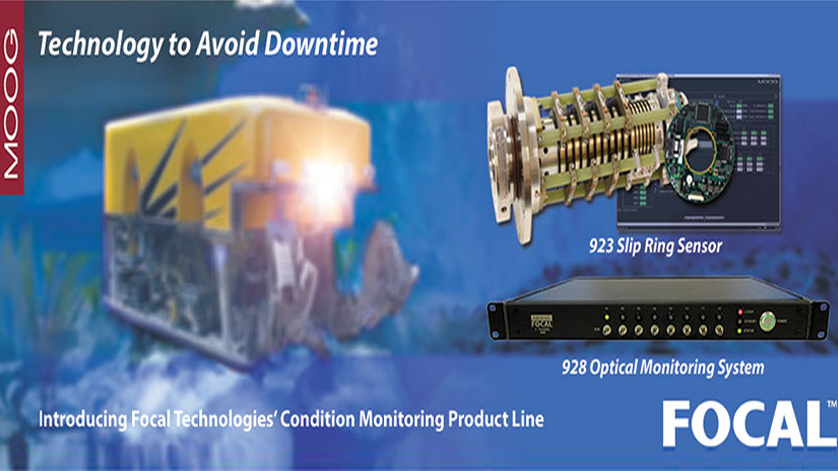Latest Technology in Condition Monitoring from Focal Technologies

Focal Technologies, a Moog Inc. Company, announces the launch of a new condition monitoring product line.
The first product in this product line, the Model 923 Slip Ring Sensor, is a miniature, ruggedized, health monitoring and data logging system for Focal rotary products.
When installed as an option in Focal’s slip rings, such as the Model 176 or larger units, the Model 923 Slip Ring Sensor provides real-time access to diagnostic information as well as data storage for offloading at a later time. The diagnostic information obtained can be used to determine the overall health of the slip ring.
Typically mounted inside the slip ring, the Model 923 Slip Ring Sensor logs measurements from a number of on-board sensors for parameters such as: temperature, slip ring rotations, speed, relative humidity, acceleration (3-axis) and ambient light. Additional sensors can be added through expansion interfaces available on the cards.
The slip ring sensor tracks electrical slip ring health for better planning of maintenance intervals, allows for early identification of potential problems and provides remote access to diagnostics for technical support. The slip ring sensor also establishes a baseline and historical data for monitoring and provides a “black box” record of events leading up to a fault condition. Diagnostic readings may be accessed via an RS485 serial link in real time by using FocalTM Graphical User Interface (GUI) software.
The second product in the condition monitoring product line is the Model 928 Optical Monitoring System (OMS), offering industry leading real-time performance monitoring of fiber-optic telemetry systems.
For subsea ROVs, these systems typically include multiple fiber-optic rotary joints and connectors, tethers, and umbilical cables, although other subsea and industrial applications are also supported. The OMS seamlessly integrates with the existing Focal multiplexer and slip ring diagnostics to measure and locate anomalies in the optical system, e.g. high losses or back reflections, allowing timely investigation of emerging optical problems well before they impact critical data links. Unlike standard telecom OTDRs, the OMS automatically displays the optical system as a graphical chain of components so that user-configurable warnings and alarms may be monitored for optical losses at each part of the system without special operator training. Furthermore, with logged historical data and statistics available for comparison, the user can quickly identify when and where specific system components deviate from operational norms.
Features include real-time performance monitoring on live fibers, i.e. operating interference free with existing telemetry wavelengths, monitoring multiple fibers automatically and continuously, data logging and reporting, and providing remote network access so that the OMS can be viewed remotely or upgraded in the field. Benefits include operational savings from preventative maintenance and reductions in costly downtime, plus benchmarking of system performance during integration, commissioning, and operation. With central logging of diagnostics from the OMS, Focal multiplexers, and Focal slip ring sensors, subsequent data analytics can be used to identify trends and reduce costs through predictive maintenance.
Ian Mackay, Electronics Product Lead for Moog Focal says, “We are pleased to launch these new condition monitoring products to help customers in reducing operating costs and downtime, while providing much greater insight into both historical and active system performance. We are also excited with the positive responses we've had working with end users during extensive product field testing and have incorporated many requested features to optimize real benefits for operators.”

